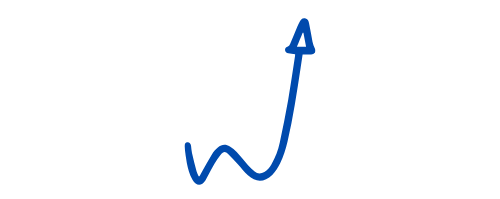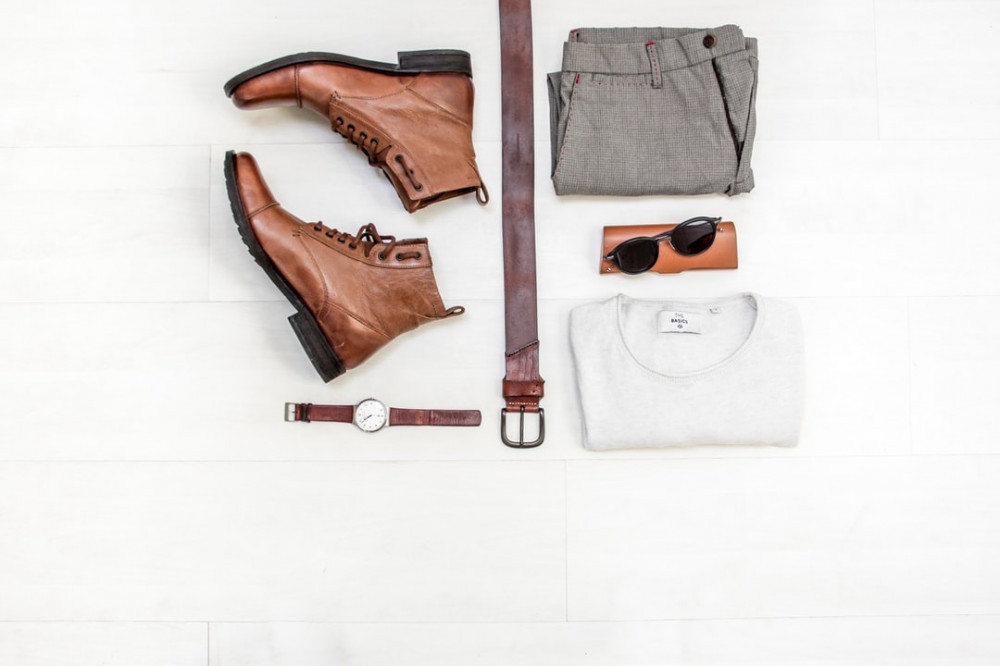As a Millennial, I am very familiar with house flipping. It was (seemingly) one of the best ways to become a self-made success in the early 2000s. This led to me asking myself the question… can you really make money selling used clothes?
You may wonder how I got from one to the other, but bear with me!
I used to watch TV shows that featured all of these low-value properties, that were then transformed into beautiful homes that earned the flippers a huge profit. Everyone wanted that life… until the bubble burst. Those ‘boom days’ became folklore with the gradual onset of the Great Recession of 2008, which saw entire neighborhoods abandoned in their semi-completed states. This weakened economy gave rise to a new kind of flipper… the clothes flipper.
The Concept Of Making Money Selling Used Clothes
More accessible than real estate, clothes flipping is a simple business. You either buy hot merch at retail pricing and sell it to consumers who missed out when the store’s inventory ran out (as is notoriously commonplace with brands like Supreme), or you scour secondhand thrift stores for under-priced clothes that you can flip and still sell for a less-than-retail price.
Either approach can be a way to make money, so let’s take a look at how it works in practice.
What Is The Earnings Potential?
For much of Middle America, you can expect to find thrift stores stocked by college kids trying to scrape together extra cash for textbooks. In the case of Gerald from Las Vegas (KTNV Channel 13 Las Vegas, 2018), he spends about 3 hours each week casually flipping through thrift store racks for clothes he believes can be resold. He sticks with what he knows… and in his best month, he purchased $60-worth of t-shirts and sold them for $300.
This paid for his groceries that month, and also allowed him to buy a few craft beers.
If however, you’re like Natalie (CNBC, 2017) and live in a large city ripe with affordable designer and luxury brands, the earnings potential climbs significantly.
Natalie spends a whopping 60-80 hours each week shopping for merch, photographing/posting it online, and packaging and shipping orders. She has taken clothes flipping from side hustle to full-time business, and processes 300 orders/month on average… earning up to $10,000 per month; safely banking six-figures in a year.
Woo girl!
Taking tips from these two clothes flippers, here’s what you need to know to make money selling used clothes.
Clothes Flipping 101
The best place to get up-to-speed on the online reseller market is to hop onto eBay. With the right clothes, you could easily earn $500 in a couple days, which could fund more investment into your new business.
Do some searches for sold products filtered for the buy-now category. This will show you how much each brand sells for, and what types of clothing people want.
Not every item from a brand sells well. Ignore the items that have a low sales price, and concentrate on what sells the most for the highest price. Be very careful to account for packaging and shipping costs as well, as that will eat a sneaky bite out of your profit.
Armed with a better awareness of the market, and with a ballpark shipping-cost in mind, start shopping at thrift stores near the nicer part of town (the people that live in these areas tend to travel more, spend more, and have better clothes that are easier to sell).
Just Like In High School, The Brand Matters
A deal is only as good as the brand you’re buying.
Remember that you’re depending on the reputation of an established brand to give secondhand buyers the confidence to buy.
If you can’t afford the secondhand designer brands, buy what’s trending in the mass market. People want what other people want.
Some brands that sell well include brands like: Adidas, Anthropologie, Barbour waxed jackets, Brooks Brothers blazers, Coogi multi-color sweaters (ugly and hard to find, but boy do they sell), Diesel jeans (especially if the label is Diesel Black Gold – that’s money), Harley Davidson jackets (embroidery adds value – avoid the plain jackets), Jams World, Levi (everyone seems to have this white shirt with a red Levi logo), Loro Piana, Nike, Oxxford Clothes suits, Patagonia anything, Polo Ralph Lauren (watch for the vintage bear logo on their rugby shirts – it’s worth more than the common pony logo), Supreme, and Tommy Hilfiger.
Buy Out-Of-Season Or Clearance Clothes
Business is all about profit. And a solid plan for boosting your margins is to buy out-of-season clothes at the best discount, and hold onto them until the next relevant season comes around.
With summer coming up, buy-up all the cool winter clothes. As fall arrives, start selling your winter inventory.
Selling early in the season should get you top dollar!
Then, buy up all the summer clothes when they go on clearance. It’s a cycle to get into, and it will earn you more.
Insider tip — Yes, even thrift stores have to make room for new inventory and have clearance sales. Since these stores are often less ‘corporate’ than retail outlet stores, you may find employees more willing to tell you when a sale is scheduled. Employees will also be able to share what days of the week new deliveries arrive, and how often the clearance rack is replenished.
By shopping consistently and hitting stores on these key days, you’ll scoop up the best inventory and get the best deals.
The Resale Market Still Wants Quality
Shoppers are wary in the secondhand market. Used clothes have a greater risk of being damaged or showing signs of wear.
Make your customers happy by stocking up on merch that still looks good and is hole-free. Glance over the seams to make sure stitching is intact. If a seam curves around the shirt, it may have been a factory reject.
Retail quality control departments require merchandise to have straight, symmetrical seams. Check for holes under the sleeves, or signs of wear at the elbow. Look at pant zippers, the crotch, and the hemline to ensure that the clothing is free of holes or thin fabric.
Insider tip — Quality is best showcased in quality photography. When you take photos, light the merchandise well. Natural light will show color most accurately. Snap some closeups of any branding or design elements. This is the only way a buyer can gauge whether they’re interested in the product.
The better your photos are, the easier it will be for a buyer to say, Yasss!
Resale Prices Fluctuate By Trend And Platform
Prices will follow what’s trending. To know what’s in and what’s on it’s way out, do regular eBay searches to see what is currently selling. Mass market clothes may fetch up to 50% of their retail price, but only for the hot items. Retailers will have end-of-season clearance racks that offer 50% off, and you can sometimes grab great deals here as well.
Just remember… to successfully resell clothing, the sales price must be lower than the new retail price!
Pricing may also vary based on the platform used. While eBay is the OG, a bunch of new options exist as well. Here are a few apps and websites:
- Depop: Depop is where the world’s creatives come to buy, sell, and discover the most inspiring and unique things.
- Trade Me: makes it easier to search, view your Watchlist, bid and buy, and sell the things you don’t need anymore – all while you’re on the go.
- Poshmark: the #1 place to buy and sell fashion. Shop millions of closets—and sell yours too!
- The RealReal: the leader in authenticated luxury consignment. With an expert behind every item, they ensure everything they sell is 100% real.
- Tradesy.com: save up to 70% on new and pre-owned Louis Vuitton, Chanel, Michael Kors, & more. Sell what’s in your closet today to buy what you want to wear.
- ThreadUp.com: Advertised as the world’s largest online consignment and thrift store, although they only accept clothing for women and children.
Is Clothes Flipping A Good Fit For Me?
Barriers to entry are remarkably low for this side hustle.
We all have clothes, and we all have thrift stores. The key to success, however, will come from understanding market trends and consistently shopping for more deals.
To quote the Devil Wears Prada, “an interest in fashion is crucial.”
A casual clothes flipper generally shops 3 hours per week. A full-time clothes flipper shops 60-80 hours per week.
Following fashion trends and being aware of what brands are currently in-style will become part of the daily routine.
My Personal Feelings About Selling Used Clothing To Make Extra Money
Should you really try to sell used clothing and turn it into a side-hustle?
While it’s easy to get into, the time-commitment makes this side hustle lukewarm on the side-hustle heat scale.
Shopping hauls will be hit and miss, based on how consistently you shop and also on how big your city is.
Merchandise needs to be purchased at the lowest price possible, and the most desirable items likely need to be sourced the same day they hit the thrift store floor… or someone else will buy them first.
Significant earnings come as the time-investment increases, which seems to defeat the purpose of a side hustle in some ways.
It’s a mixed bag. It could be great. It could be a waste of time.
I feel like a good side hustle improves your business skills and gets your feet wet in a developing industry. Overall, clothes flipping is a very reactive strategy that would be difficult to scale profitably.
But in the short term, you might fare alright.
Our Final Opinion On Selling Used Clothes
Should you try to make some extra money by selling used clothing as a side-hustle?
There are a lot of ways to make money online. Some are good, some not, but ALL of them are still just trading hours for dollars.
Starting your own affiliate website really is the best way to build passive income and “make money while you sleep”. Affiliate websites earn income in every timezone, and can be instantly accessed by billions of smartphones across the globe!
What’s up ladies and dudes! Great to finally meet you, and I hope you enjoyed this post. Sign up for my #1 recommended training course and learn how to start your business for FREE!

